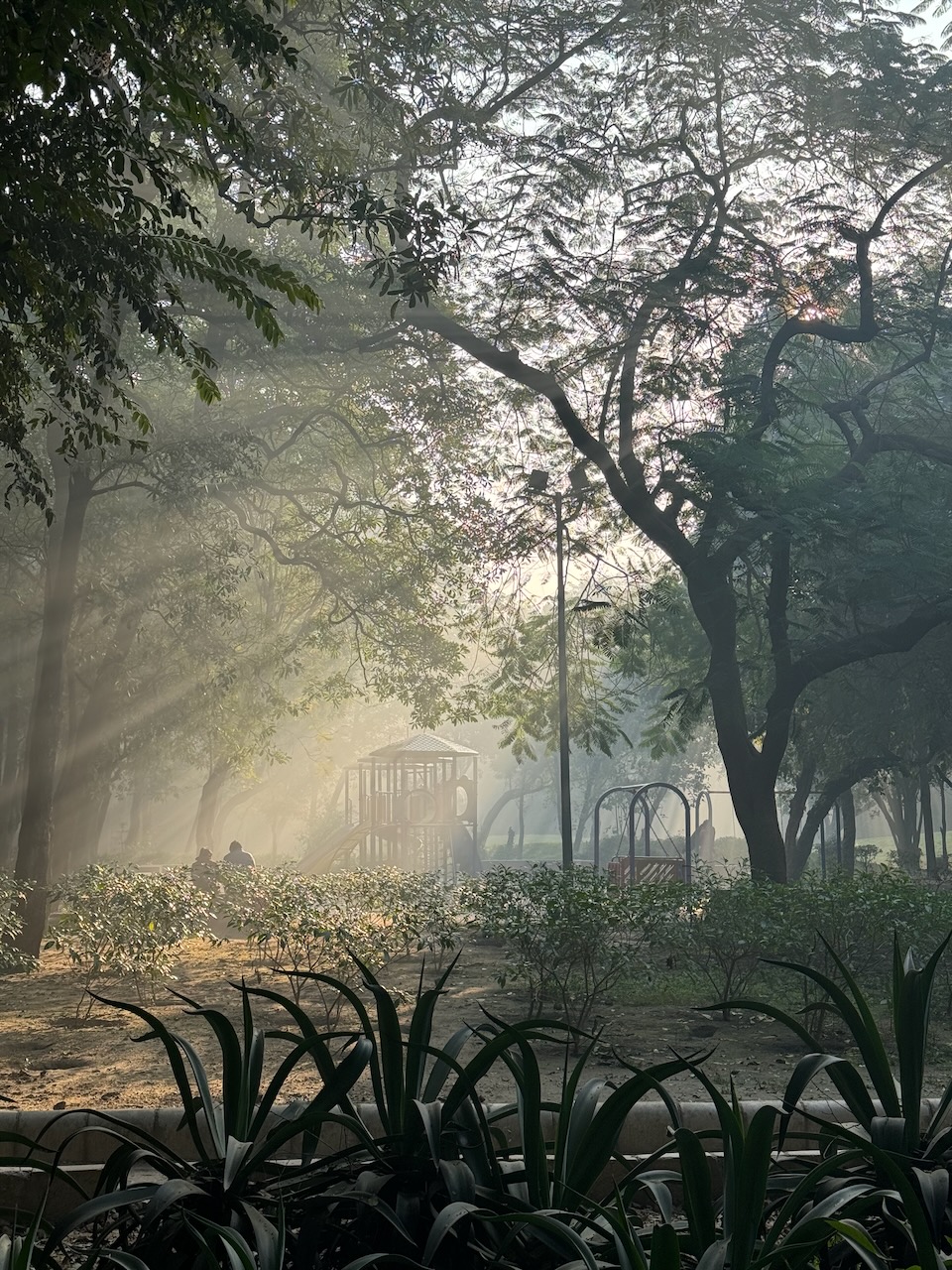
Created: 14th of March
Updated: 8th of May
I'm running through Green Park, it's 8 a.m. The morning light filters through the foliage, and casts stunning beams of light. It's quite beautiful, really.

Unfortunately, pollution is the reason why those ray are so striking. And I'm not crazy: a N95 mask is tied to my face (the AQI index is around 300, a.k.a "hazardous").
The eastern part of the park is Deer Park, where you can find, uh... deers. I don't have a picture for you, unfortunately. Despite wearing a mask, working out feels good—it's more difficult to keep a good hygiene when traveling, both for sport and nutrition.
On the flip side, the good thing about being in a big city is you have a lot more options when it comes to food. Another way to put it: I don't have to eat Indian food, which means I can get a healthy breakfast!

(You can get this at Blue Tokai cafés, by the way)
When I eat at an Indian restaurant, though, what I like the most are Thalis. They are an assortment of breads, rice, vegetables, and other fillings. This way, I can get many flavors on a single plate.
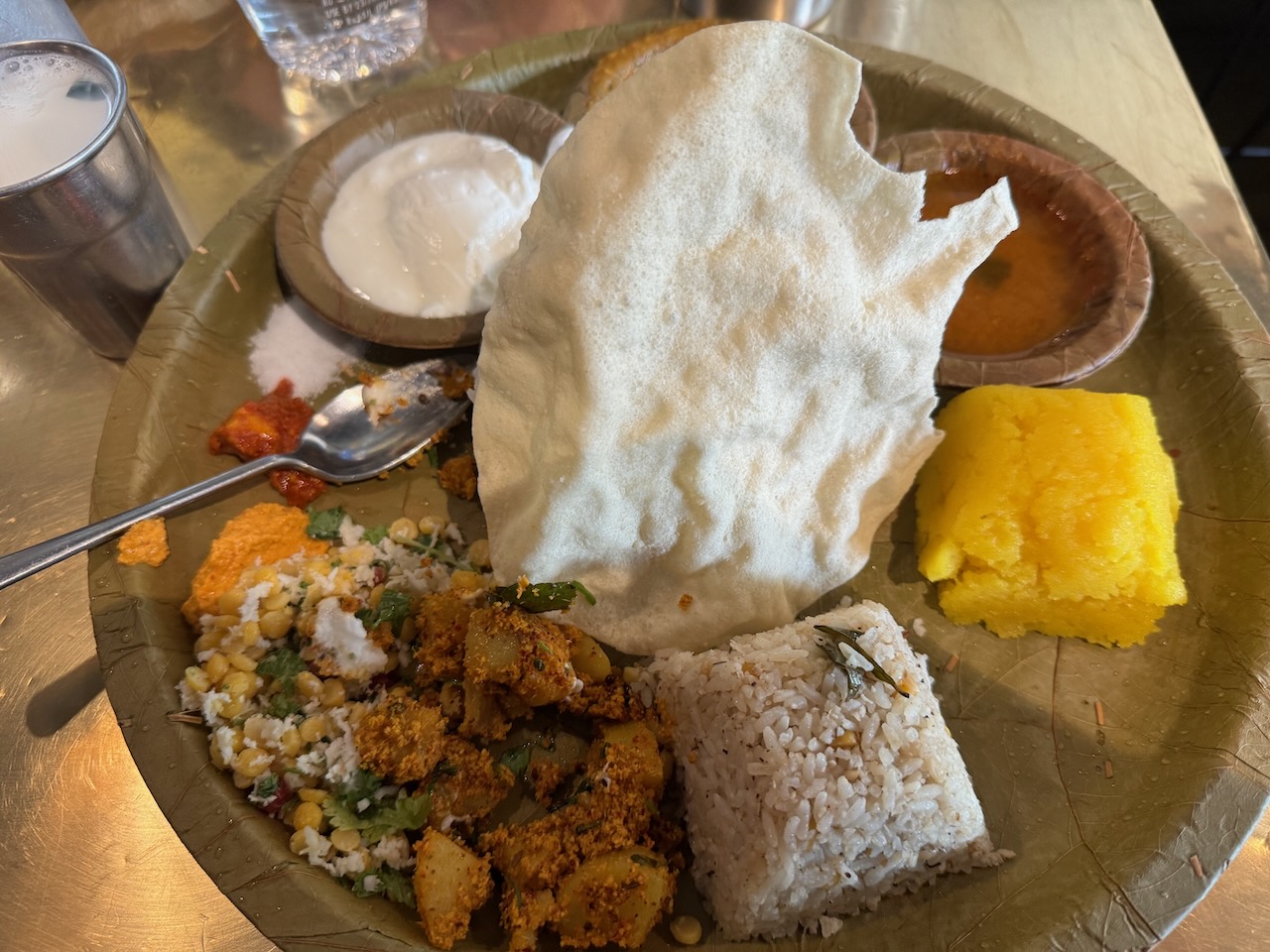
This one is a bit special, as it features typical south-Indian food, and is served platter made from banana leafs. The yellow stuff is sweet, but I'm not sure what it is... So, apart from food, what can you see in New Delhi?
New Delhi is a huge city. Many of the places I'm going to list are well-known, and there's a lot more to experience than what we've done in two days.
A huge Minaret from the twelfth century, surrounded by ruins. It's pretty impressive, and I really wish we could go to the top, but the access is now closed after many accidents.
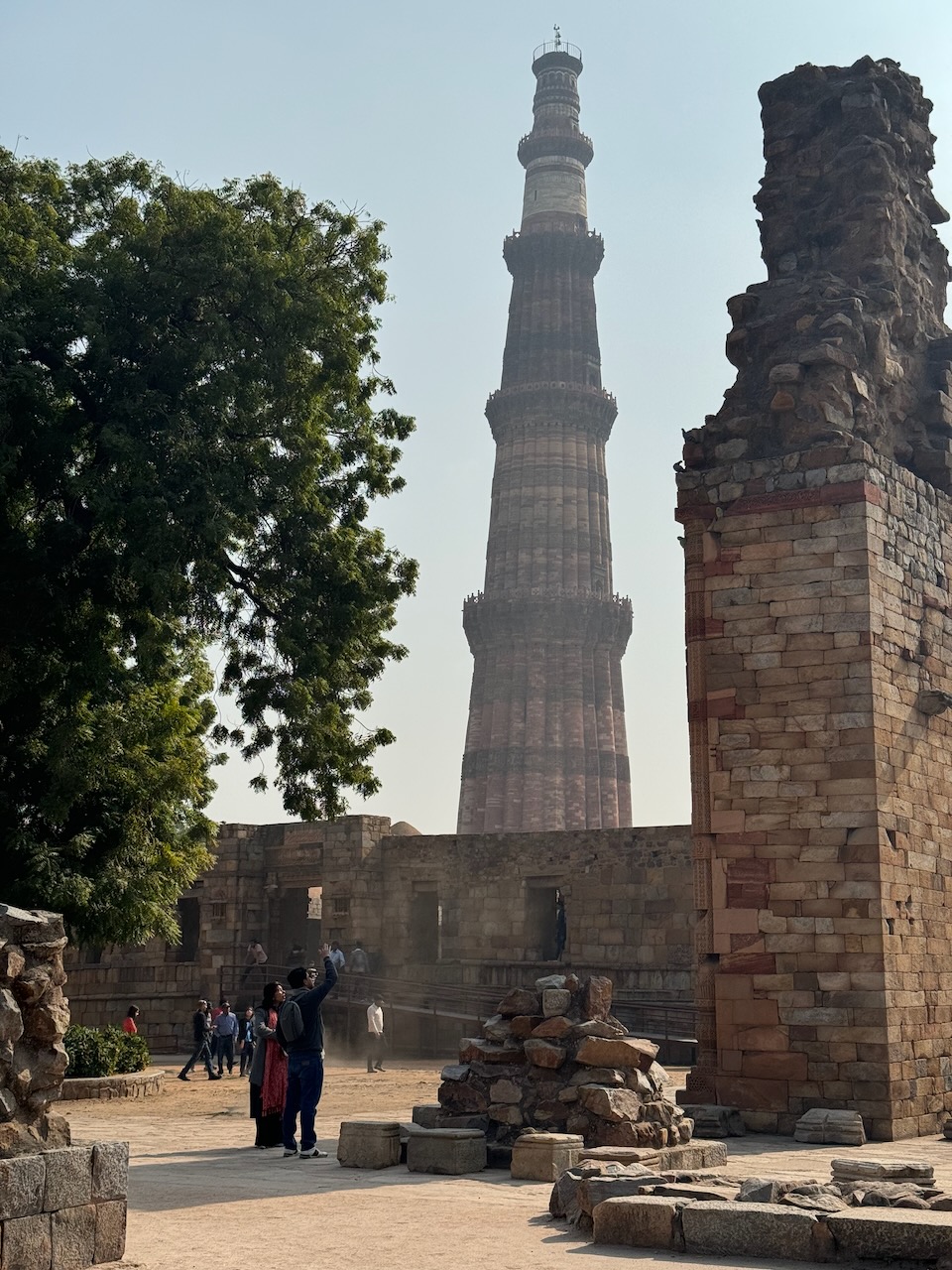
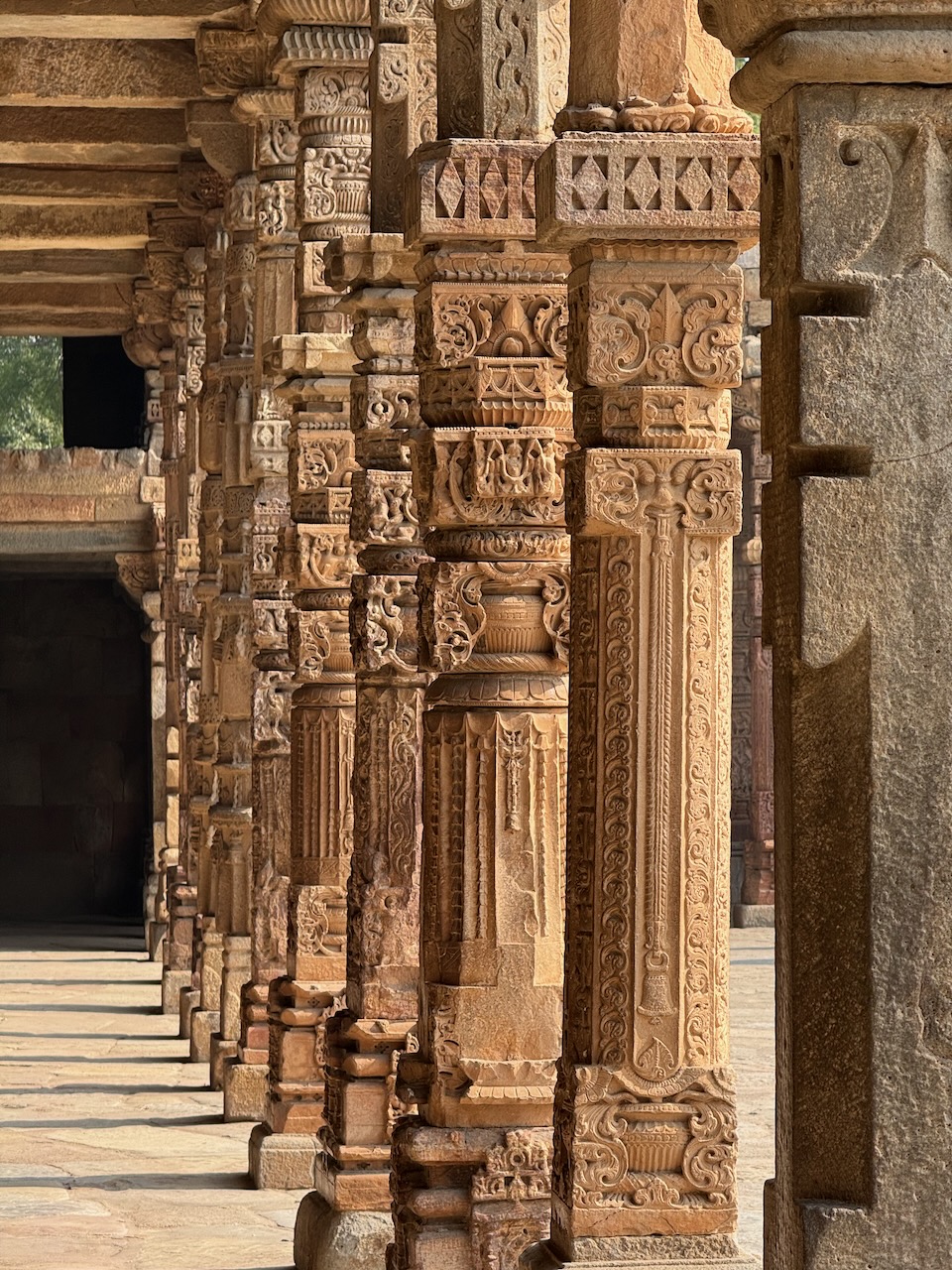
(This place also lies directly under the airport's approach path, which makes it great for observing airplanes.)
Much more recent (1986), this temple is devoted to the somewhat obscure religion of Baháʼí Faith. There's a constant flow of visitors, who have to first go though the park, then though a small facility where the employees' sole job is to store and retrieve shoes, and finally listen to a couple of explanations. Pictures aren't allowed inside, but we can stay as long as we like.
Sitting on a marble bench, in the sunlight, in this huge open and silent space is pretty relaxing.
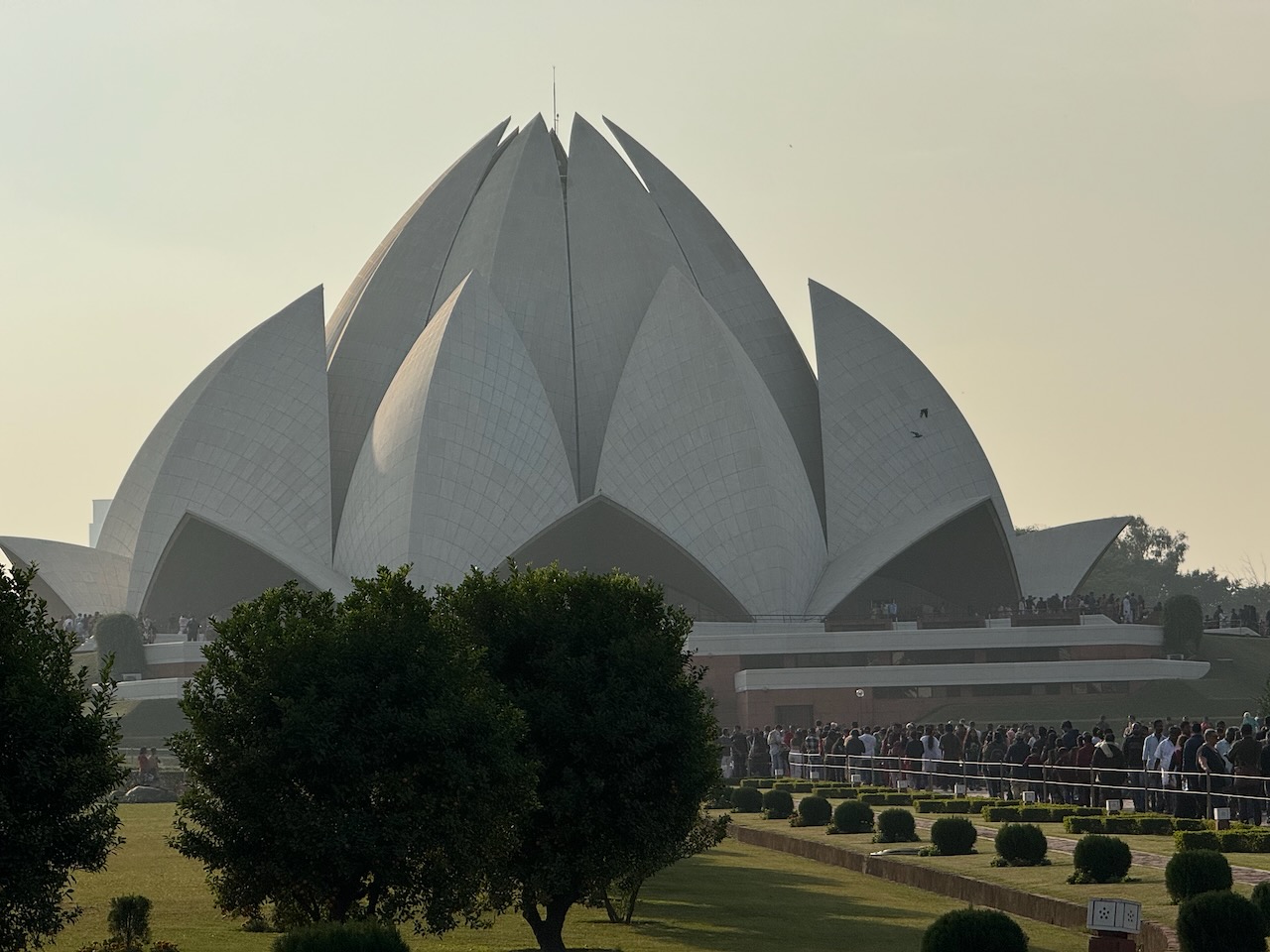
Immediately north-west of Lotus Temple, is another smaller and more lively temple, devoted to the International Society for Krishna Consciousness. Yeah, I know, another religion you've never heard of!
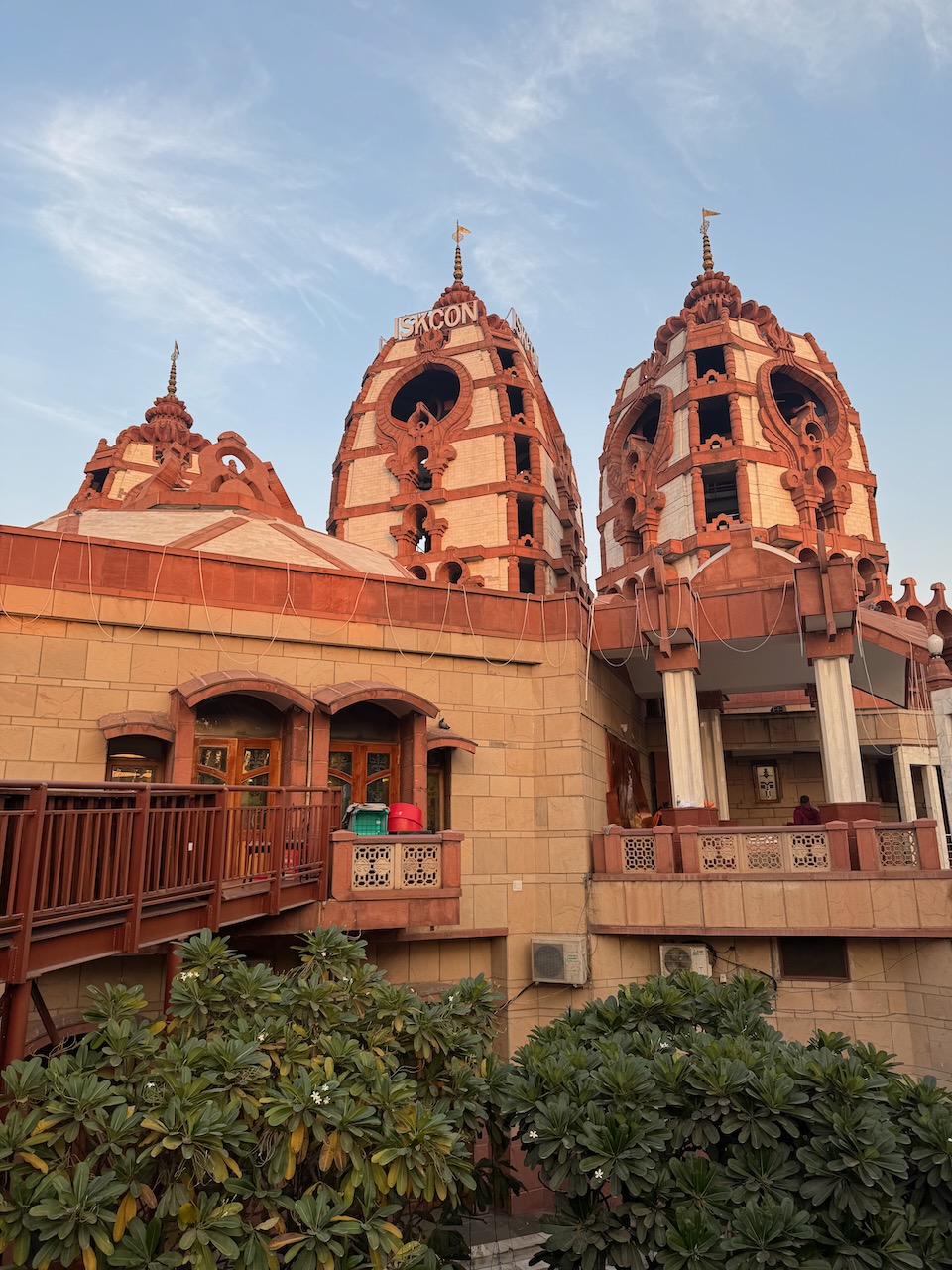
Inside, people praying on carpets take up the whole room. It's the exact opposite of the Lotus Temple: noisy, colorful, many objects and pictures and people talking... Outside again, together with my friend A, are two women selling some kind of holy book, and claiming absolutely seriously that reading it would solve basically all of our problems. And all that for only three hundreds rupees, who knew it was this simple!1
Behind them is a statue, surrounded by a spiral of exactly 108 flowers painted on the floor (they look like stars to me, and the whole thing seems to be a life-sized board game). People are going from the outside in, flower by flower, saying something every time... I decide to ask the women about it. They tell me you have to repeat the mantra a certain number of time on every flower, and that completing this process would purify your soul.
Uhh, sure! Let's move on.
This neighborhood is very different. Big wide roads, huge roundabouts, lush gardens, expensive-looking buildings, more police: it's the whole area south of Rajiv Chowk (previously known as Connaught Place). It's probably one of the safest and most well-off areas of the city.
The house is surprisingly devoid of visitors, which the employees seem to outnumber. From the house leading into the garden are concrete footsteps, retracing those of Gandhi right before he was assassinated, in 1948.
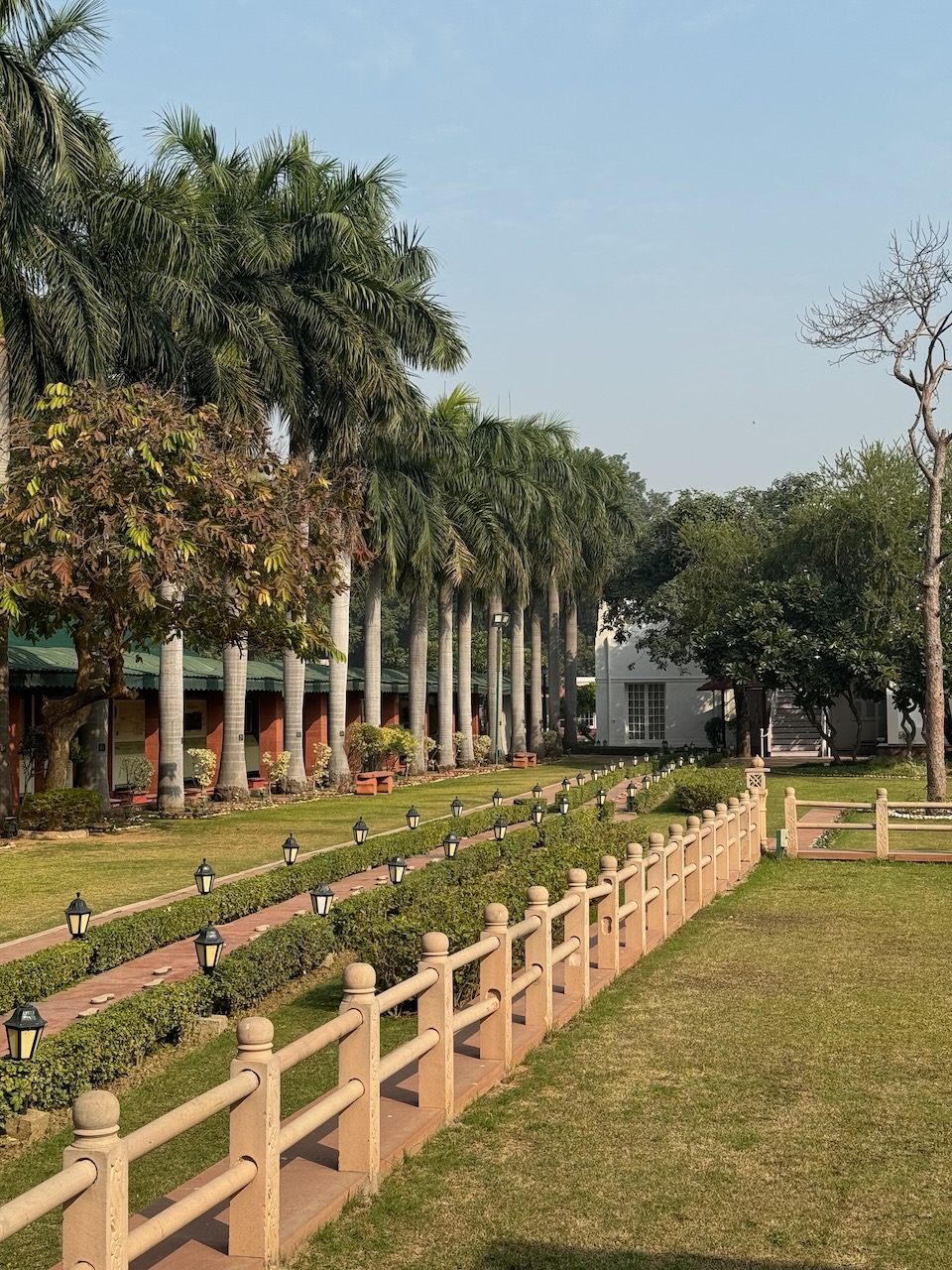
Inside, a guide wants to show us around. Actually, he demands it, we don't really have a choice. We are lead in every part of the exhibition almost by force, making use take part in the interactive installation, which is really funny.2
| Category | Entrance fee |
|---|---|
| Indian | ₹40 |
| Foreigner | ₹600 |
Yes, I know, ₹600 is about 6 euros, which would be on the cheaper side for this kind of place in Europe. But still, this 15x price difference3 feels icky. It's fine for me, but what about people coming from other nations, who might not have much more money than the average Indian tourist?
Anyway, the place is huge! There's a first tomb (smaller than Humayun's, but still definitely not your average tomb) where a guy asks me if I want to know more. I'm still naive at this point, and say yes. He shows me around for a couple of minutes, and I say thank you, and carry on.
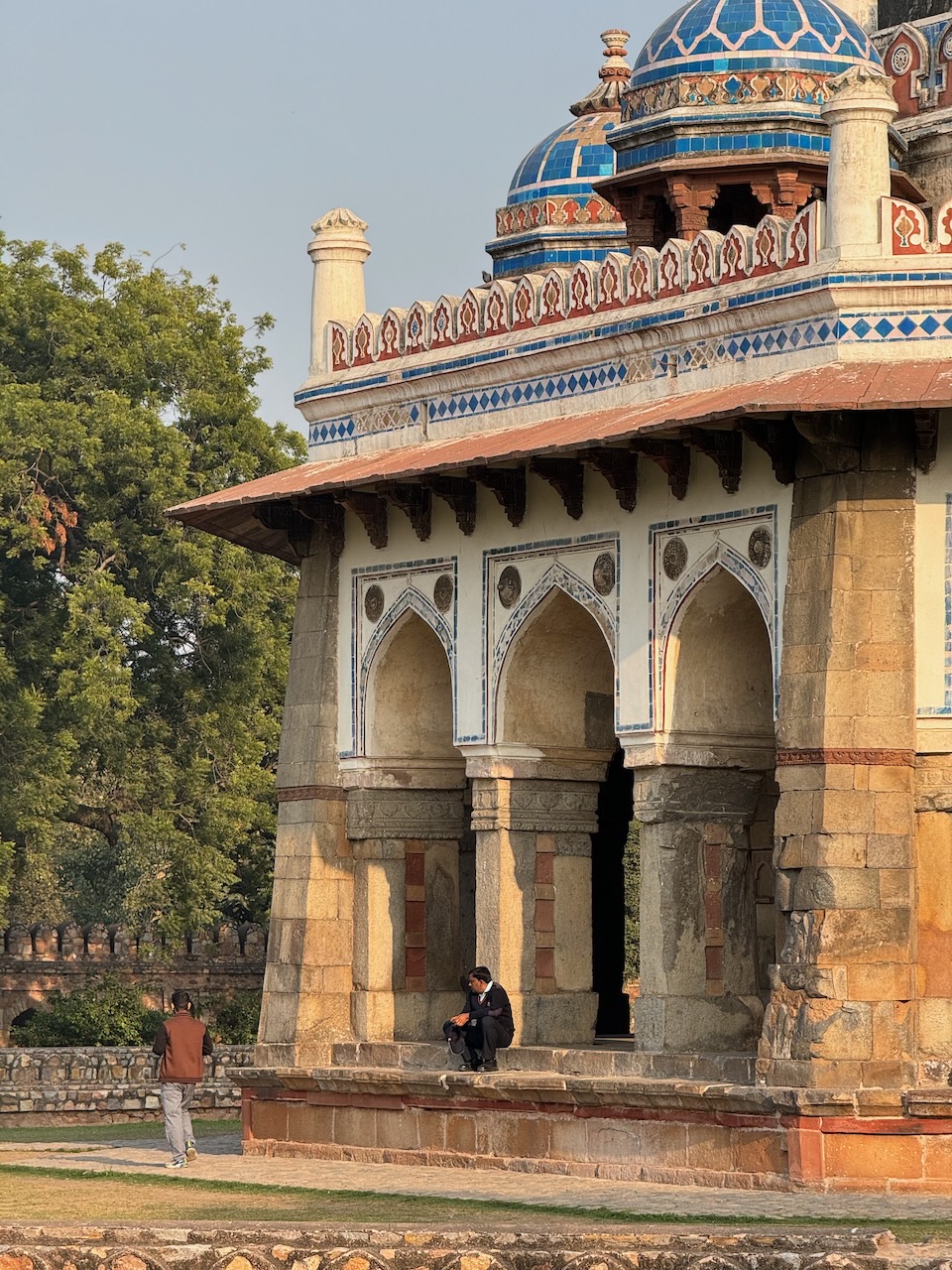
That's him, sitting on the ledge. He throws me a dark glance, did I see that right? I'm genuinely confused, have I done something wrong? It takes me a few more minutes to figure out the obvious: he was expecting a tip...
Moving on to the main attraction.
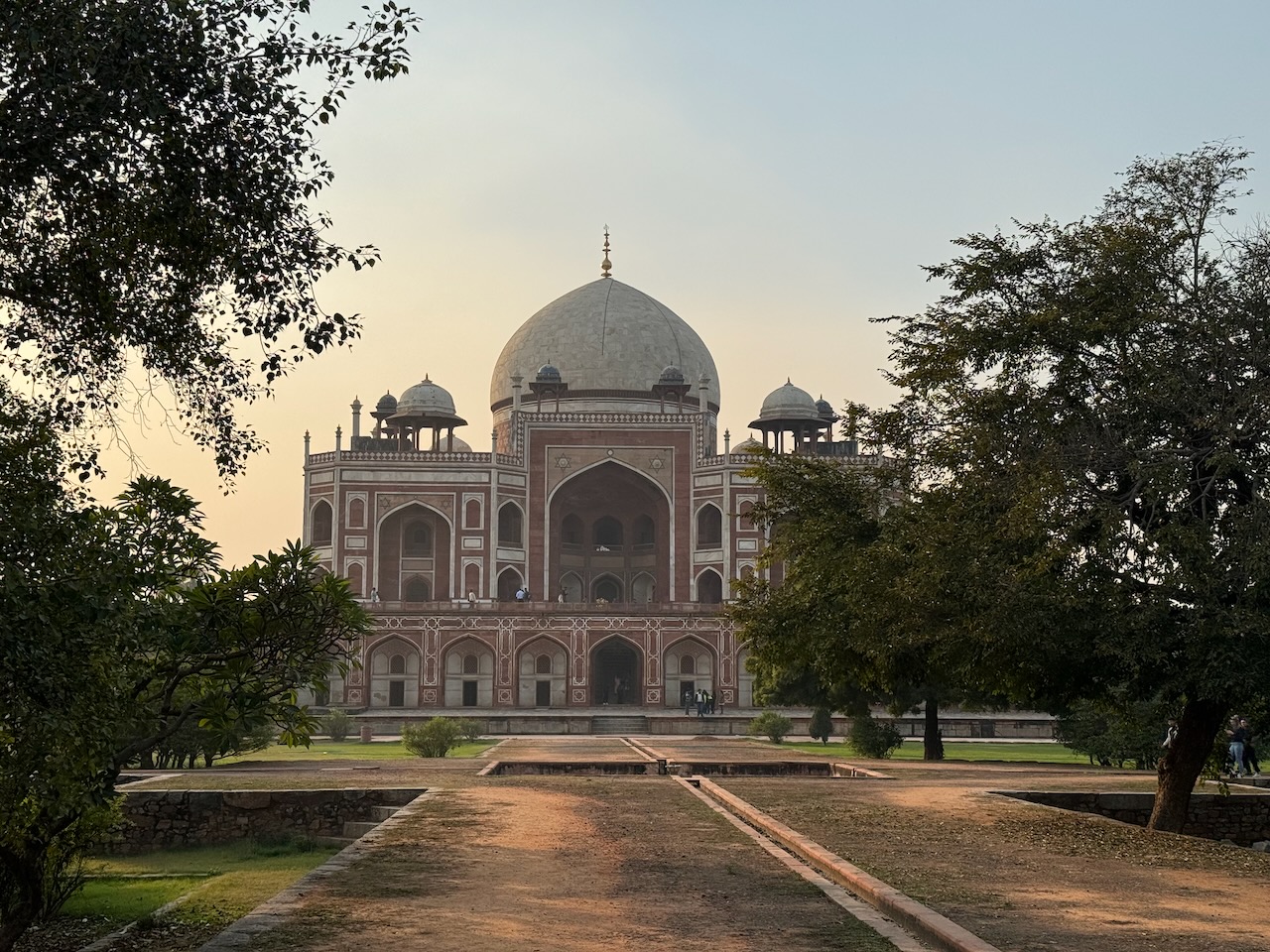
If you think this looks like the Taj Mahal, congratulations! It was indeed an inspiration for it.
Dilli Haat is a big outdoor paying market, very touristic and full of overpriced goods, and people tirelessly trying to sell them to you. Would not recommend.
What I would instead recommend is taking the subway at least once. Not that it's incredible in any way, but solely for the experience. Okay, let's start from the beginning.
I'm a Dilli Haat with the others, and I'd rather not spend another minute there before going back to the hotel. I'm not waiting for the driver, and I kind of want to try the subway. I know the entrance is just next to the market, and I see stairs going down with a sign saying "Subway".
It does not look exactly like a subway entrance, but what else can it be? There's a man cooking food inside this "subway", smoking out the corridor, and another one welding something, and then some shady people. At the other end, a flight of stairs takes me up to... the other side of the street, which is shady and is definitely not the subway.
Turns out they call these underground walkways "subway". How confusing.
The actual subway entrance is fifty meters further, and looks like an normal subway entrance. Good.
Challenge no. 1: buy a ticket
If the machine works and it still give paper tickets and you have cash, then it's no problem!
But otherwise, you need to queue for the counter4, and understand what the cashier is telling you, while ten people are impatiently waiting behind you, and you realize you are the only non-Indian in the whole station... It is an experience. You'll get through it.
The fare is trip-dependent. For two stations, mine is ₹10.
Challenge no. 2: go though security
Just like in an airport, you queue for the security check! Luggage go though x-ray, and you go though a metal detector and body check.
Challenge no. 3: try to feel comfortable
Now, New Delhi's underground is most likely one of the city's safest public spaces. It's quite recent, well maintained, and—incredibly—rather clean. But I've rarely felt like being the stranger. There's an incredible amount of people going through the station, yet I see only Indians. Living like a local, I guess.
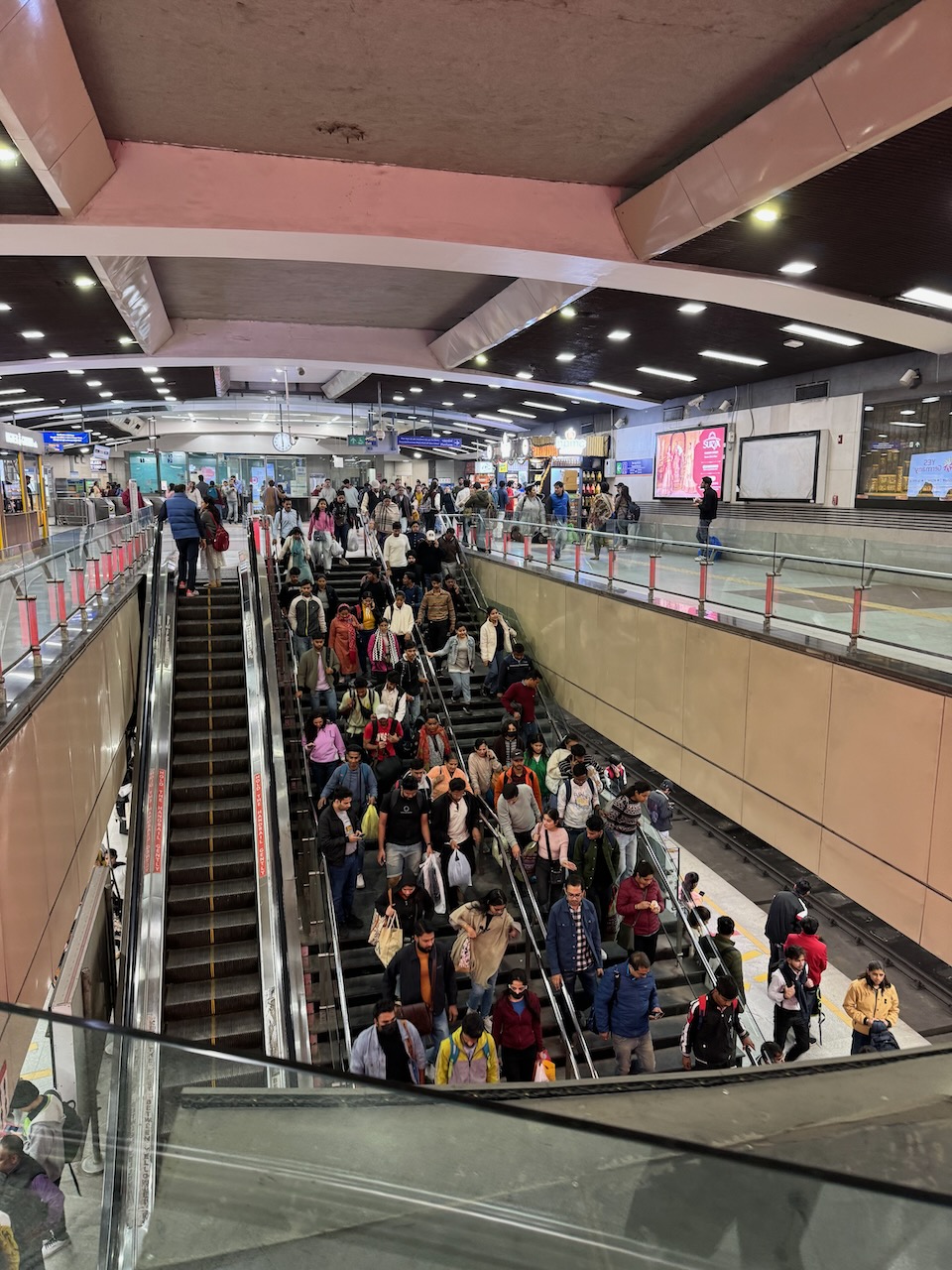
Challenge no. 4: go back outside
By most aspects, this subway system is like any other, which means you might have forgotten where you are. Depending on your destination, prepare yourself for chaos (as usual).
I have mentioned places, without saying what the city looks like.
First: the city is incredibly heterogeneous, more so than any other city I've seen5. I will talk about Old Delhi later on; let's now focus on the neighborhood where our hotel lies.
Our street is pretty quiet. Right next to the hotel is a pharmacy, where you can buy, I think, everything without prescription, and also dog food and water bottles and things like that. The ground is uneven, dusty, with the appropriate amount of litter. The electric cables are a the definition of a mess; I'm not sure how there's not more electric fires, it's incredible that it works at all.
When, at night, you walk towards the most active part of the neighborhood, streets start to light up and the mood is really nice. The streets are narrow enough that only scooters go through, which is a godsend. It's the first time I start to feel comfortable in India.
To my eyes, the area screams cyberpunkiness, I love it. It's filled with small cafés, restaurants and shops, illuminated by neon signs and fairy lights.
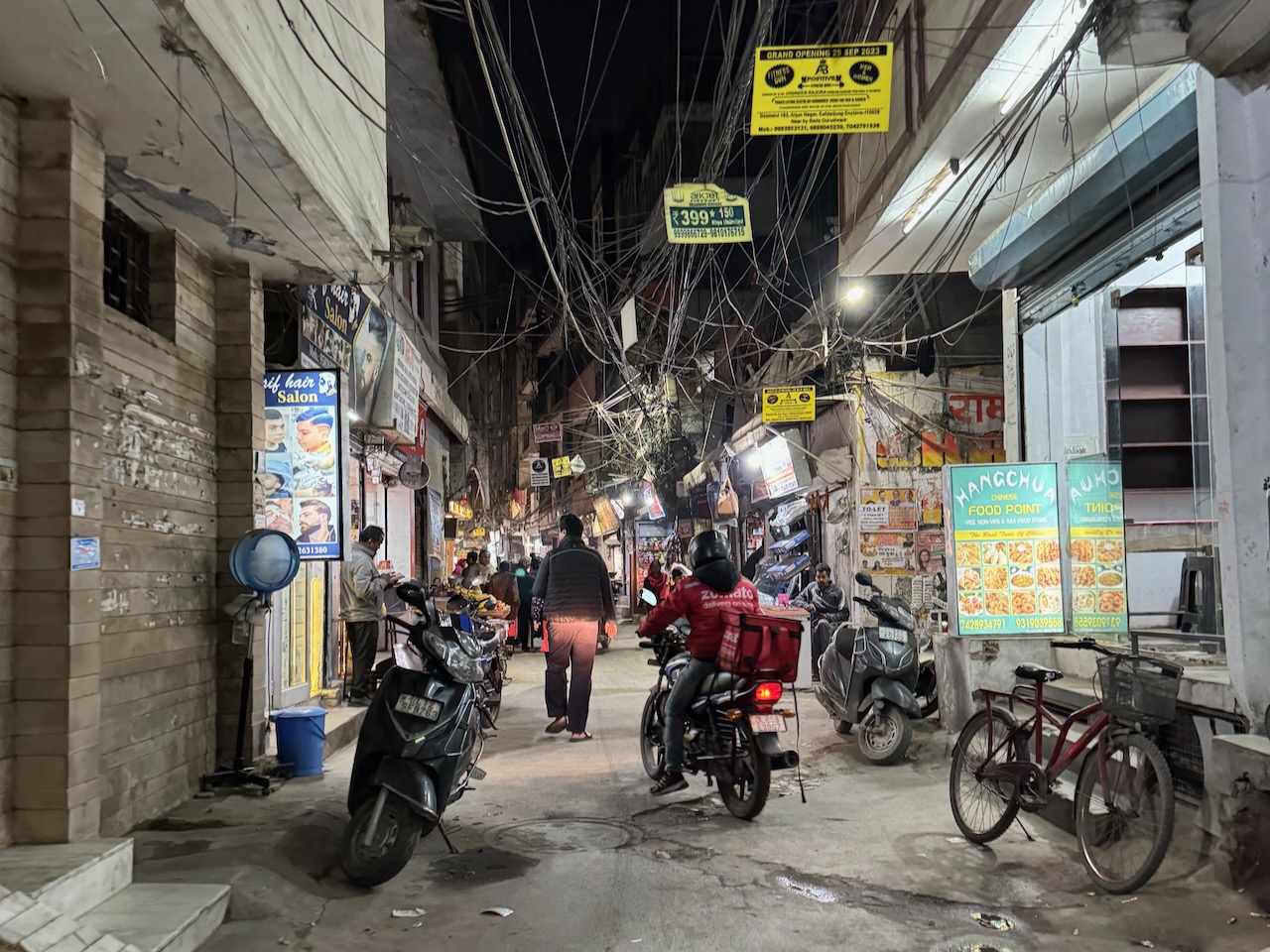
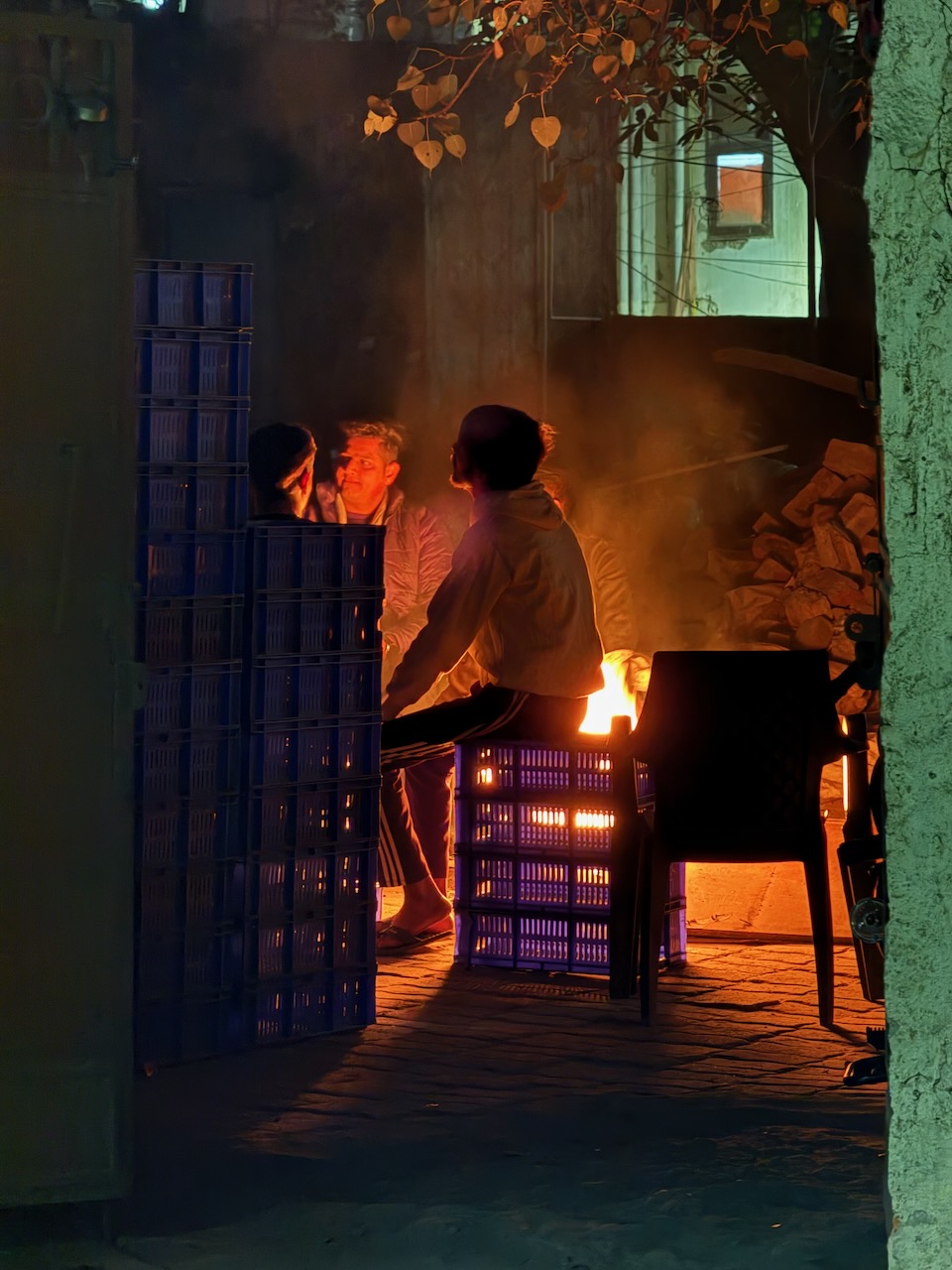
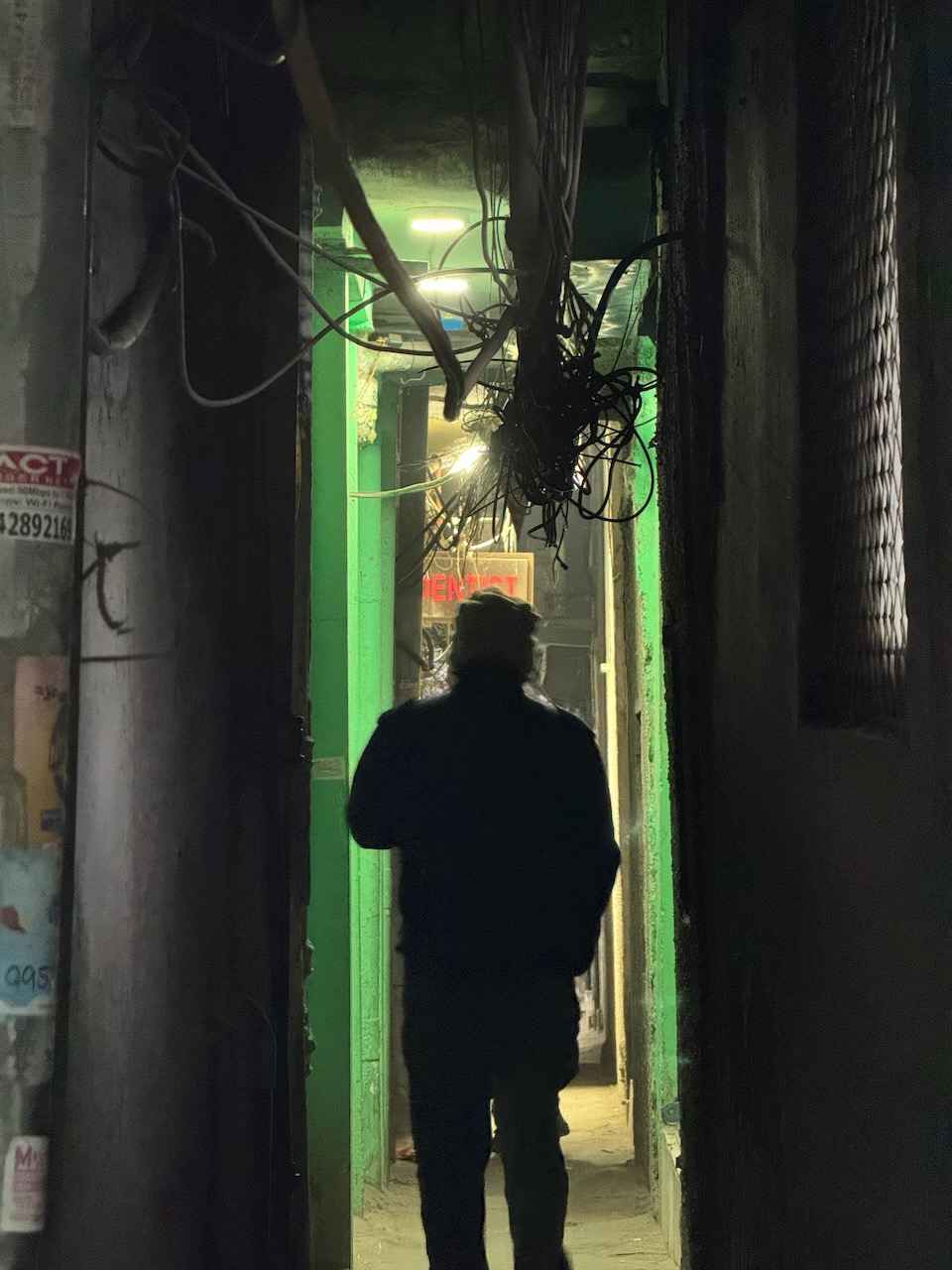
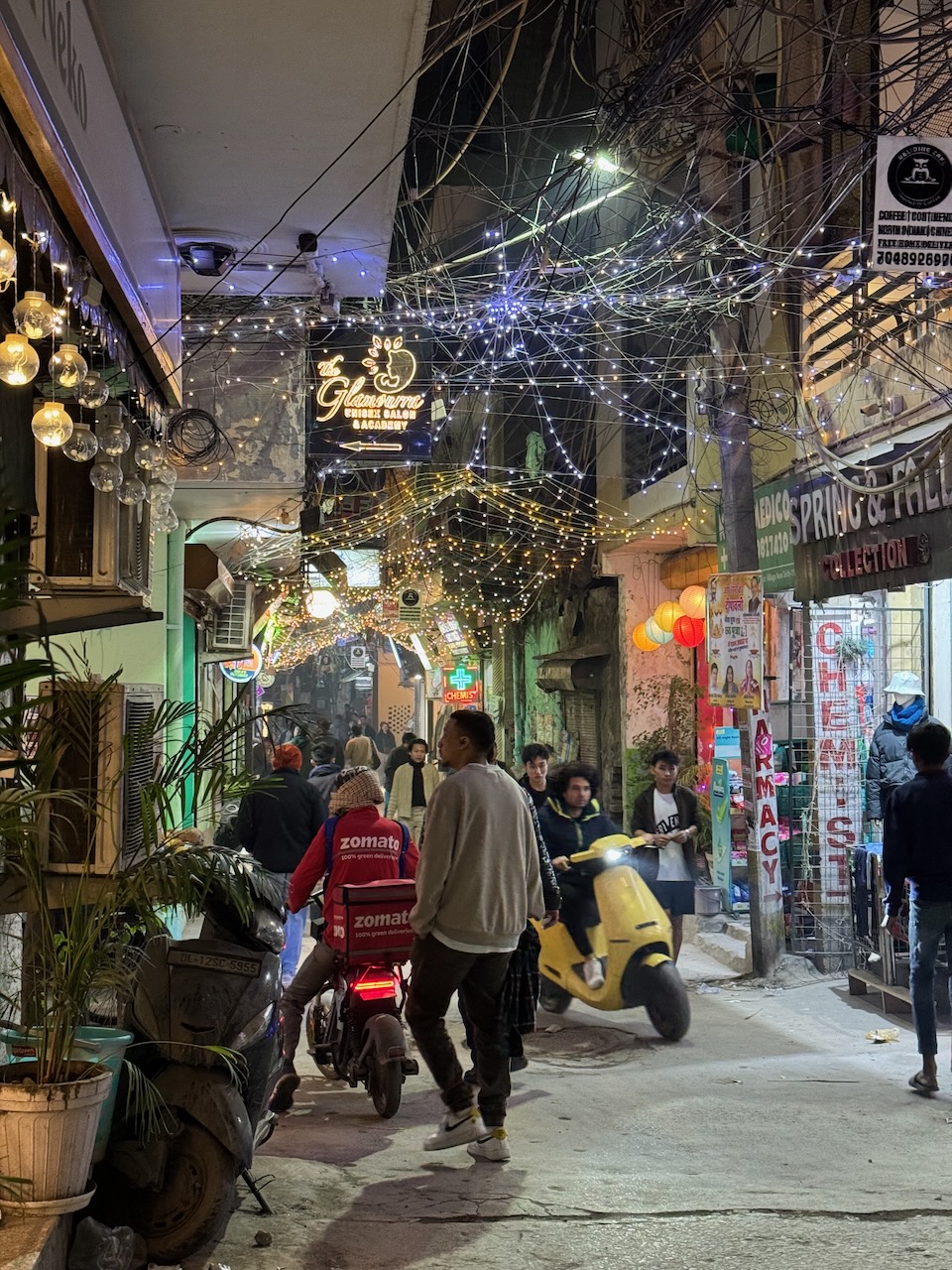
A and I go to a Korean restaurants, Dear Naga. It's quite cozy, and the bibimbap is good. But it's a somewhat posh area, and things are a bit expensive.
When we get back to the hotel, the staff is sleeping on mats laid on the floor. Okay.
We'll come back to New Delhi in a little while, but the next stop is a very special city: Chandigarh.
See you in a week (or two) for part 5.
By the way, A decided to buy the book, I should ask him whether his life changed since. ↩
I would love to think he was simply proud to show us around, but it was more likely for the tip. ↩
In most tourist attractions there's a 5x-10x fare price difference between Indian and foreigners. ↩
Maybe you'd have better luck than me using the app for tickets, but foreign credit cards rarely work with Indian services. ↩
Except maybe Bangkok, it's hard to tell. More on that in a later post, I guess. ↩